Back in 2016, Richard Bluff shared insights about ILM‘s work on Doctor Strange. He subsequently went back to a galaxy far, far away to focus on the visual effects for The Mandalorian, The Book of Boba Fett, and Ahsoka.
How did you get involved in this series?
During our evening discussions after a day of filming Mandalorian Season One, Dave would talk to me extensively about his plans to bring Ahsoka into live action. Remarkably, many of the ideas he described remained in the final version of his story many years later.
How did you organize the work with your VFX Producer?
We’re fortunate that the VFX vendors I’ve worked with have been with us for many years from Mandalorian S1, S2 and Book of Boba Fett, so it was natural that we would want to go back to those trusted partners. The split of work between them depends on a number of different factors, but prior to those conversations we’re first working with ILM to secure their body of work. ILM is usually driving the main looks, developing the new characters, the newest creatures, large environments, any sensitive plot reveals, and the opening and climax of the season. Despite how it sounds there’s still a few thousand more shots to distribute. We look at the considerable strength our vendor partners bring with them and match them up with what work we’d like to take on. This has to be balanced with the volume of work they’re willing to accept and oftentimes their willingness to partner with other companies and share assets. It’s a constantly evolving puzzle to piece together and make sure everyone is happy and realistic expectations are set on both sides.
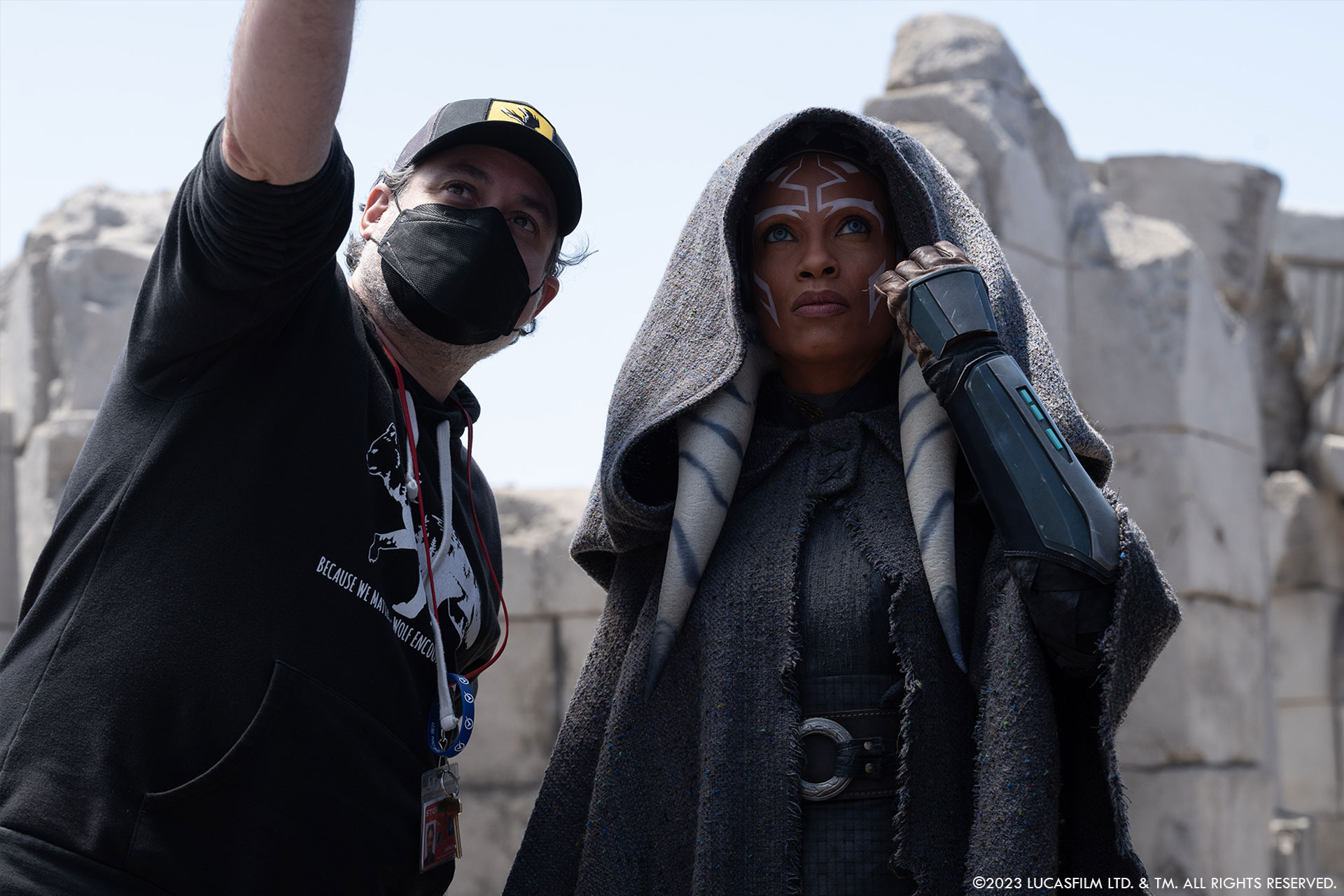
How did your team approach bringing to life the iconic lightsaber duels in Ahsoka, considering its importance in Star Wars lore?
It was crucial to get the lightsaber fights right and this of course always starts with cast performance on set and Jeff Webster (the Gaffer) expertly controlling the interactive light output from the practical sabers on an almost shot by shot basis. From a VFX stand point our work began with understanding from Dave what characteristics he wanted to incorporate from the various versions seen across all media types throughout the past 40 plus years.
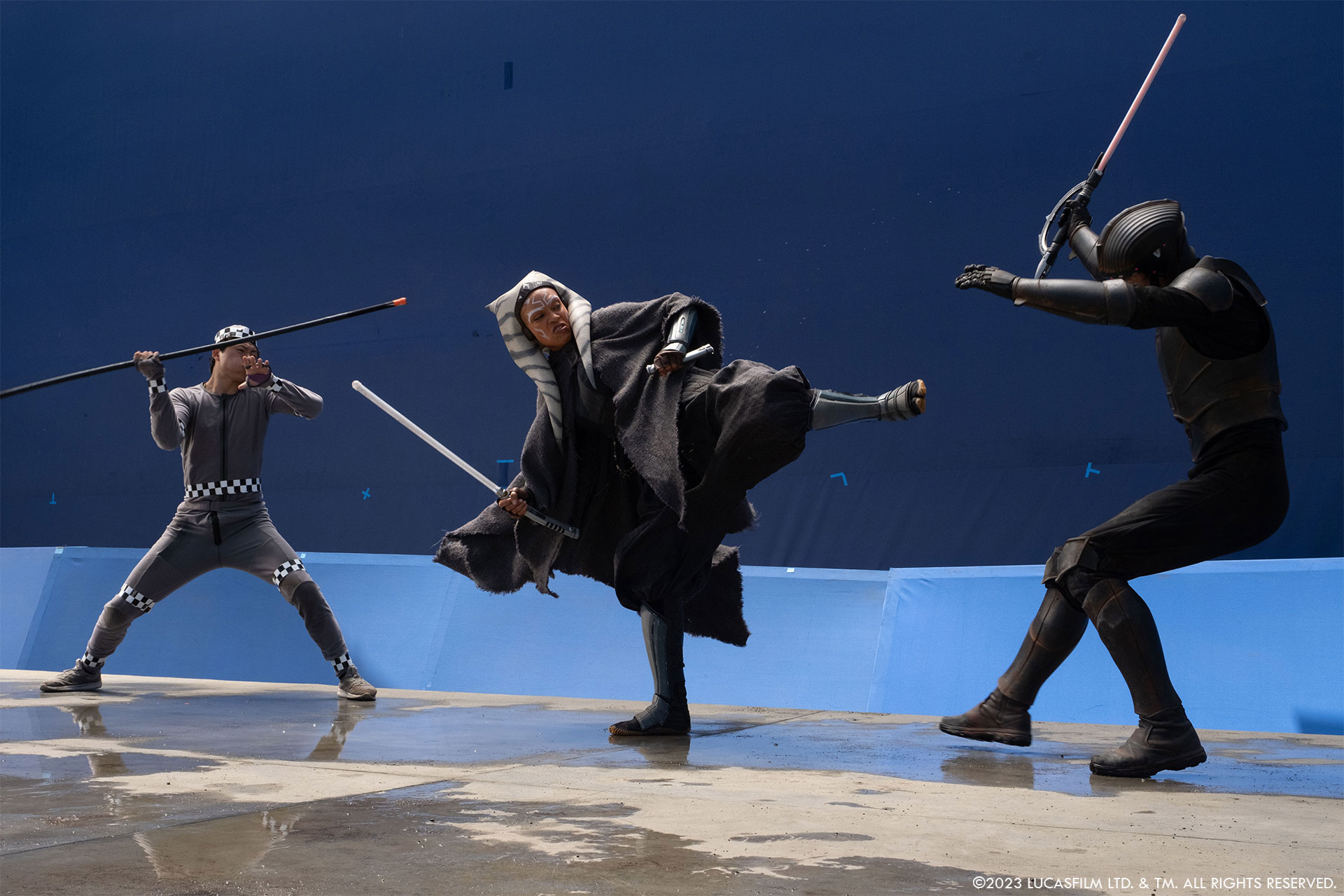
Dave wanted to maintain the version George had originally developed for A New Hope with all the modern day subtleties and embellishments our tools now provide. Dave was particularly keen on replicating some of the single frame green flashes as both blades strike together, although in the final versions this color became more neutral. Other areas of keen interest were how often the sparks were omitted but the most important was how the color rolled off from a hot white(ish) core into the hue of the blade.
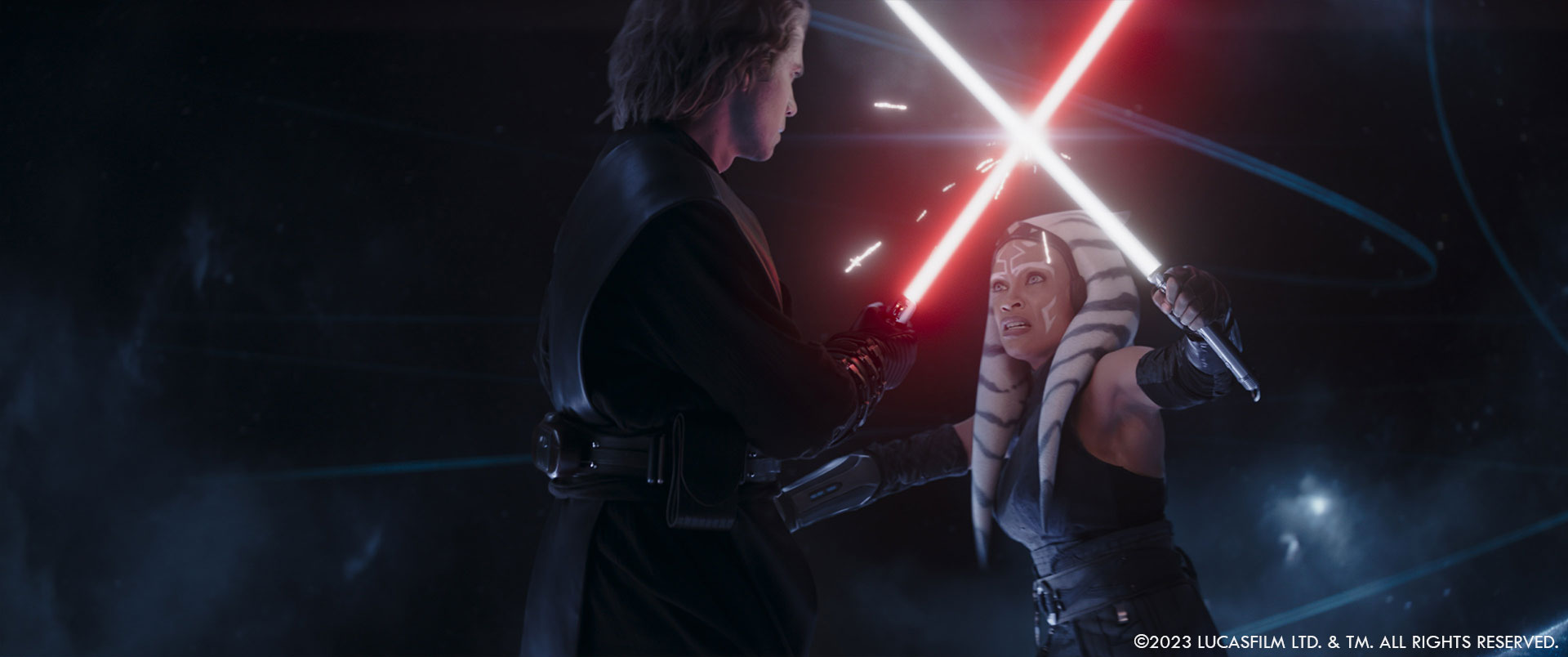
Can you walk us through the process of conceptualizing and creating the exotic environments?
Whenever you discuss conceptualizing an environment for Star Wars, you must always highlight the work of Doug Chiang and his Art Department, they initiate the visual development under the guidance of Dave, so by the time we start making the show we have hundreds of approved images providing everyone with exactly what the look of the series is intended to be. For Visual Effects our responsibility then is to take this visual guide which often includes some truly aspirational design ideas and one by one breakdown the techniques and methodologies required in order to turn them into a reality.
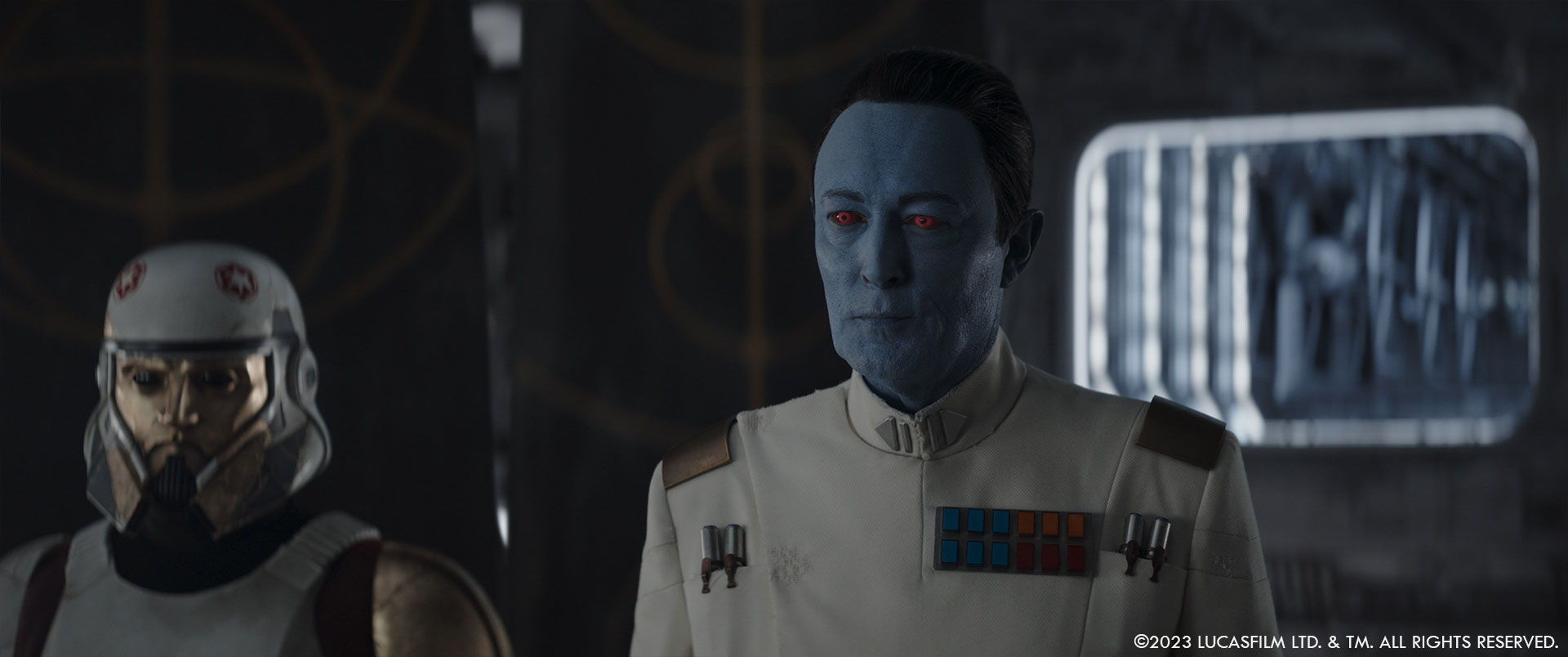
Could you elaborate on the techniques used to blend practical effects with CGI to enhance the realism of the environments in Ahsoka?
In the example of Peridia our Production Designer, Andrew Jones, scouted Scotland early in production after learning from Dave that he was writing with its landscape in mind. Jones’ photography was then passed along to Doug’s art department to provide a grounded foundation for the visualization of Peridia. Once prep heated up we (VFX) then sent a photography team supervised by Enrioco Damm to thoroughly survey the selected areas with ground and air based photography teams. This data was then shared with every department on the show to ensure the closest visual match to the Scottish landscape on our backlot set in L.A. including right down to the individual grasses and shrubs sourced by the incredible Greens Department. Once we started shooting we quickly pulled takes and sent them off to Enrico at ILM to oversee numerous temp comps with the original source photography from Scotland to ensure we indeed had a match. Happily, Production’s trust in VFX to source the photography early, along with everyone’s effort in developing such a fantastic physical set under the silks paid off and immediately we have an excellent match providing comfort and confidence prior to embarking on the 450+ shots requiring these set extensions.
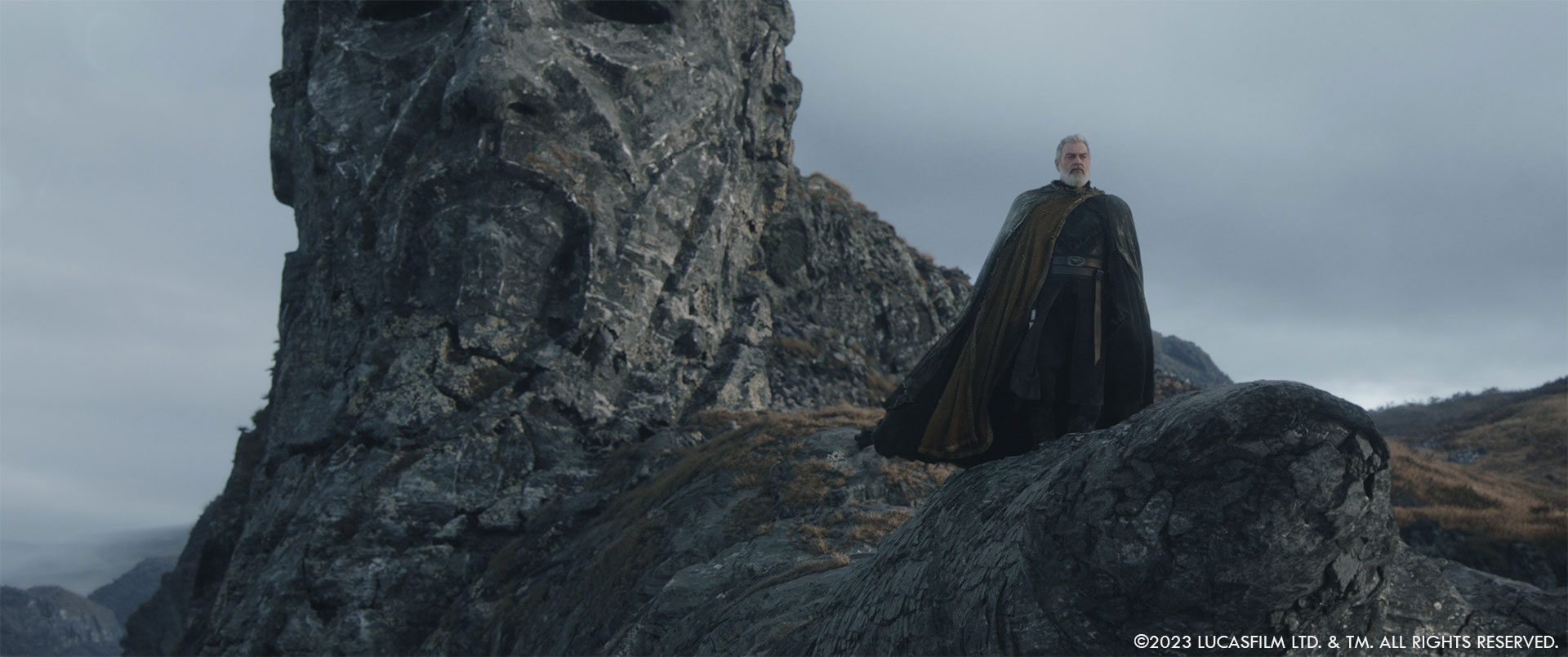
What specific challenges did you encounter while designing and animating the unique creatures inhabiting the exotic environments of Ahsoka?
The Howlers presented a new challenge for us. We knew we’d need to work alongside Special Effects in order to develop a suitable motion base solution for CU shots featuring our principal actors. This collaboration between animators at ILM, Steve Tom, our techviz guru from The Third Floor who acted as our onset Supervisor in charge of motion base work, and SFX started early with the transferring of data from our CG motion studies to a pre-existing base. The results gave us confidence for the close up work we needed to achieve, but this didn’t resolve how we would need to tackle the battle sequence between 16 mounted Bandits chasing the moving Noti Pods.
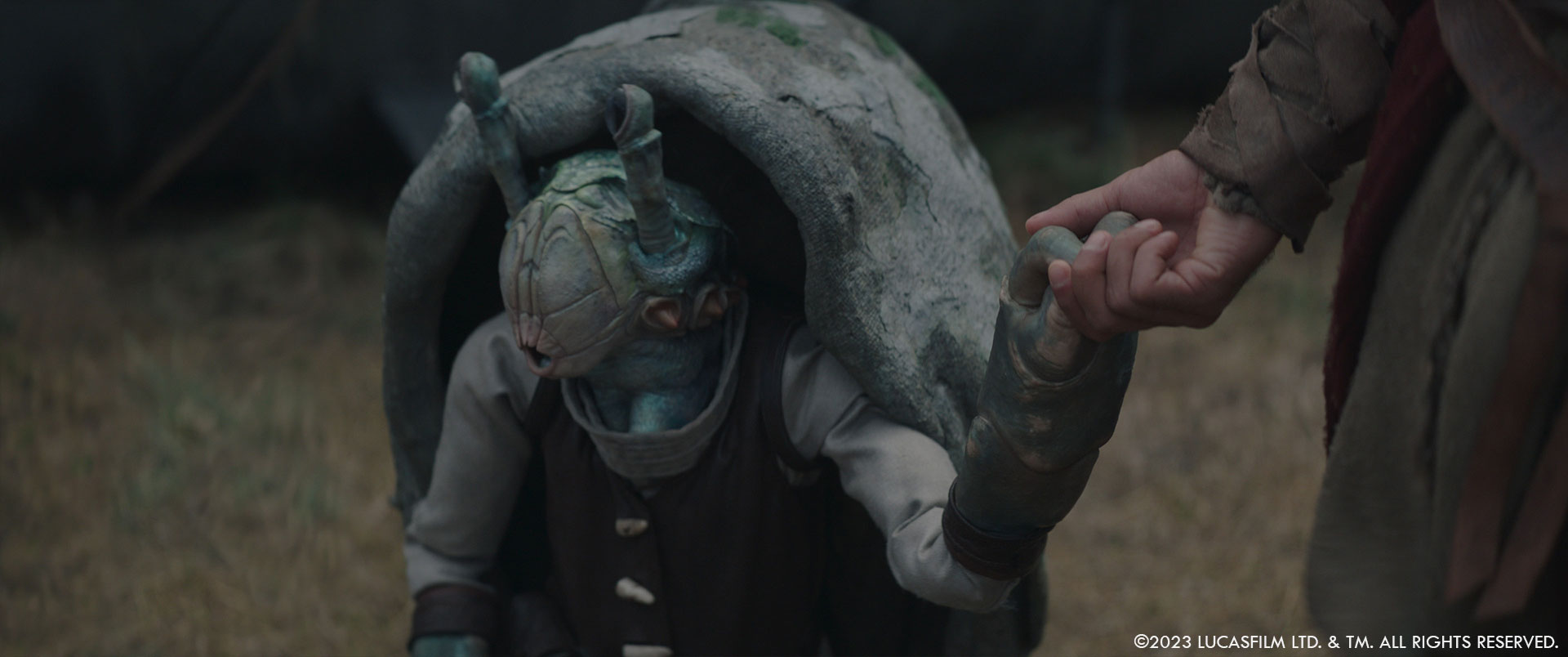
Once we started to see the sequence previz develop it became immediately obvious that we needed to do everything we could to ensure the use of horses as a proxy Howler, and move work that was initially called out for interior stage work to our backlot, which would require silking the entire area to mimic the overcast look of Scotland. Our horse exploration, and proof of concept, started with sourcing various shots from preexisting movies which featured long duration shots of horses with rider galloping, walking, and trotting. ILM animators then animated our CG Howler over the top ensuring the creature’s back was locked to the rider’s saddle. From these early tests it was clear that as long as we prevented the horse from trotting, a uniquely horse motion, and with a subtle change to the Howler leg anatomy we could be confident that the use of horses was going to be the right approach.
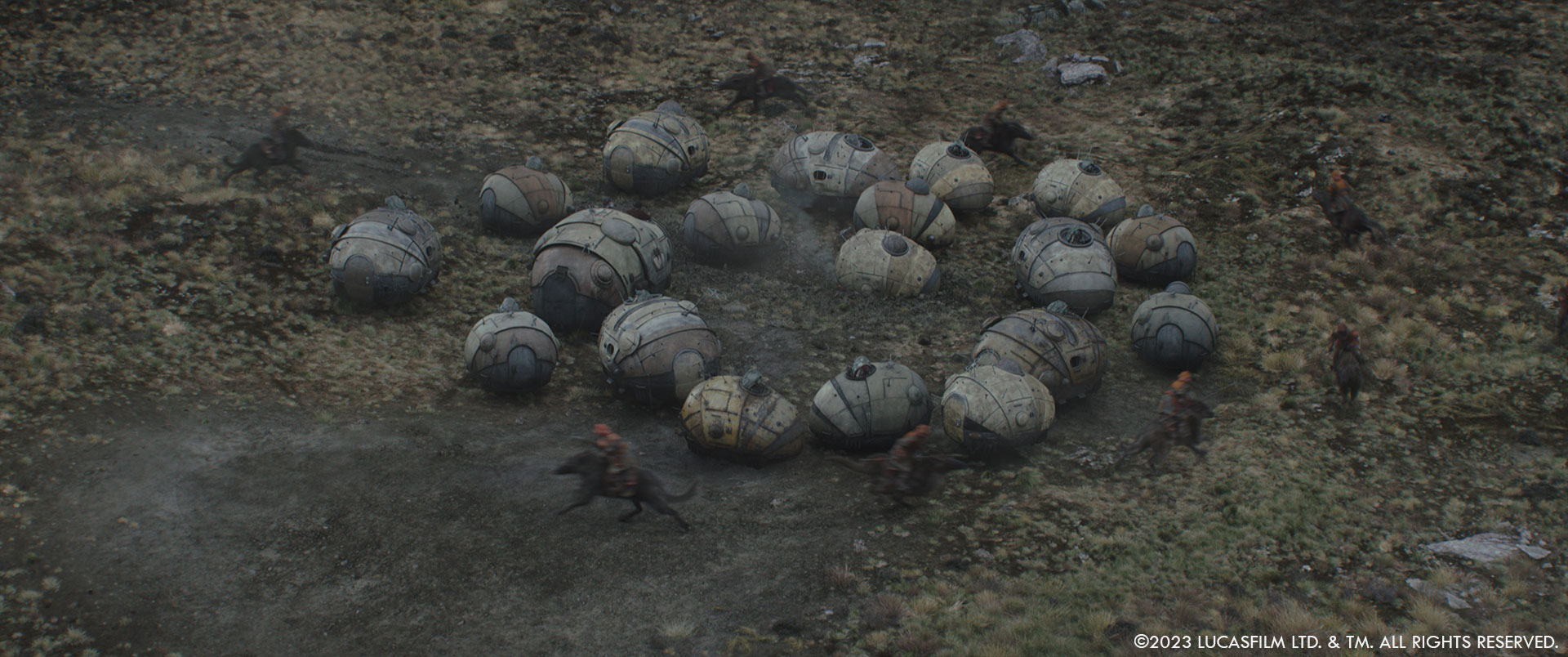
Looking back on the project, what aspects of the visual effects are you most proud of?
ILM and every one of our vendor partners on the show can do exquisite work without question, but often this doesn’t mean the process has been enjoyable. The goal for any Visual Effects Supervisor, particularly on the production side, is to not only achieve and surpass the visual goal of the filmmakers but to also ensure everyone down the chain enjoys the process and work. Clearly, I can’t have a direct impact on the day to day enjoyment of each individual but I can certainly impact the team as a whole by setting a positive and collaborative tone, communicating a clear production plan and sticking to it while also advocating for what they need to do their work as best they can. So when I walk through the halls at ILM or jump on a Zoom call with a particular group, now the show has delivered and with Dave so thrilled with how we surpassed his vision for the show, and I hear the artists say that they can’t wait for the next season to start – that makes me proud and it fires me up to do it even better for everyone the next time around.
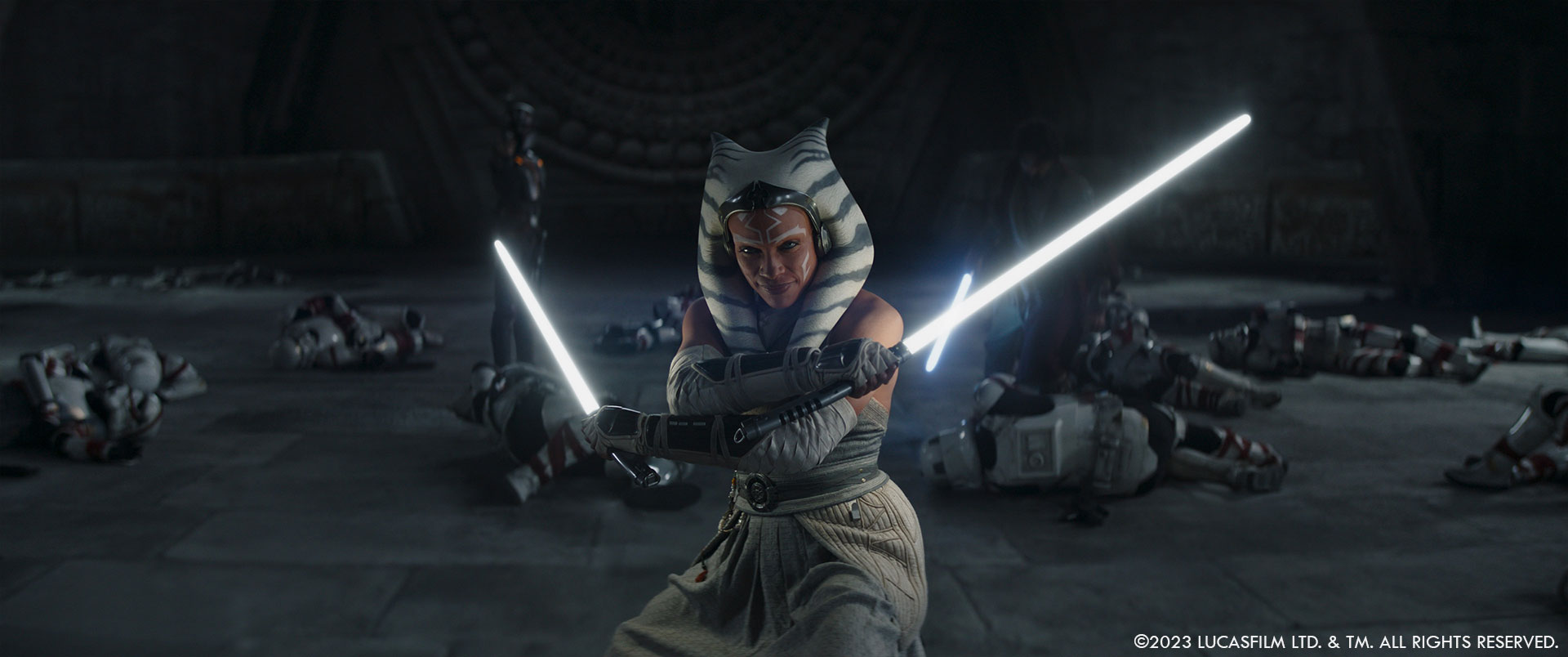
Tricky question, what is your favorite shot or sequence?
The sequence of Hera and Chopper in pursuit of the hyperdrive core in the Phantom 2. I thought the ILM artists did a beautiful job infusing the chase with so much energy and jeopardy and rendered and comped it achieving such a realistic look that I never got tired of watching the sequence over and over.
How long did you work on this show?
I worked for a little over 2 years from the first design meetings to our final delivered episode in the DI.
What’s the VFX shots count?
Approximately 4,000 VFX shots for the season.
What is your next project?
Ashoka Season 2!
A big thanks for your time.
WANT TO KNOW MORE?
ILM: Dedicated page about Ahsoka on ILM website.
© Vincent Frei – The Art of VFX – 2024




